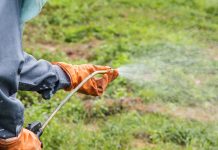September 2020 – Burning veld can be a bad method if it is abused. It is not normally recommended as a management measure, although it can be used under certain circumstances. Remember, no burning can be done without the necessary permission from the fire chief of the region, and all rules with regard to the controlling of fires must be applied.
1. WHY DO WE BURN VELD?
- To remove superfluous grass material that cannot be removed through grazing – not even through high-density grazing.
- To control unacceptable alien plants.
- To control shrubs/bushes (particularly invasive bushes).
- To make firebreaks.
2. UNACCEPTABLE REASONS FOR BURNING VELD
- To stimulate new growth in autumn and winter when good quality feed is scarce.
- To improve animal performance.
- To kill external parasites.
- Burn early to avoid strong winds in August and September.
- Burn early or late to follow a certain grazing strategy.
3. WHAT IS THE IMPACT OF FIRE ON THE GRASS PLANT?
- It destroys the growing points of the grass stalks.
- It leads to a temporary drop in the growth vigour of the grass plant.
- Fire can reduce the total biomass production by up to 60%.
4. WHY IS IT UNDESIRABLE TO BURN GRASS?
- It reduces the biomass production of the grass.
- It can lead to soil erosion.
- Major damage can be done to the growth vigour of the palatable grass plants.
5. WHEN IS THE BEST TIME TO BURN VELD?
Research results indicate that, if veld has to be burnt, the best times are as follows:
- Before the grass starts regrowing – preferably immediately after the spring rains.
- If temperatures are suitable and the grass starts growing before it rains – in this case the grass should be burnt before the first rains.
6. HOW SHOULD THE VELD BE BURNT?
Burning to remove dead plant material requires a cool fire, therefore:
- The air temperature should be less than 20°C.
- The relative humidity should be above 50%.
- It should be done as soon as possible after the first spring rains.
- Burn with the wind.
Burning for shrub/bush control requires a hot fire, therefore:
- Sufficient flammable material (grass) should be available (3 to 4 tons DM/ha).
- Air temperature should be above 25°C.
- The relative humidity must be lower than 30%.
- Burning should be done before the first spring rains.
- Wind should be present to cause an upwards current.
- The trees should start growing actively while the grass is still dormant.
The information in this article is used with acknowledgement to Dr Franci P Jordaan’s manual, “Die effek van brand op grond en plantegroei”; 2014.













